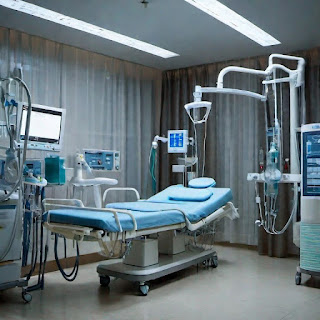Introduction
Establishing a new hemodialysis department in a hospital is a complex and multifaceted process. A well-prepared site is essential for ensuring the smooth and successful operation of the department. This post provides a comprehensive guide on how to prepare a site for the establishment of a new hemodialysis department.
Site Selection
The first step is to select a suitable site for the hemodialysis department. The site should meet the following criteria:
Accessibility for patients and staff
Adequate space for treatment stations and support areas
Access to utilities (water, electricity, gas)
Sufficient natural light and ventilation
Compliance with infection control guidelines
Facility Design
The facility design should optimize patient care and workflow efficiency. Key considerations include:
Treatment area: Separate areas for acute and chronic patients
Support areas: Nursing station, medication room, sterile storage
Water treatment system: Reverse osmosis (RO) or central water purification system
IT infrastructure: Electronic medical records (EMR), monitoring systems
Safety features: Emergency call system, backup power generator
Equipment Procurement
The next step is to procure the necessary equipment for the hemodialysis department. This includes:
Hemodialysis machines
RO water treatment system
Patient monitors
IV pumps
Crash cart
Sterilizers
Staffing and Training
A qualified and experienced staff is essential for providing high-quality hemodialysis treatments. The staffing plan should include:
Nephrologists
Registered nurses
Dialysis technicians
Support staff (e.g., administrative assistant)
All staff must receive comprehensive training on hemodialysis procedures, emergency protocols, and infection control measures.
Infection Control
Infection control is paramount in a hemodialysis department. The following measures should be implemented:
Hand hygiene protocols
Environmental cleaning and disinfection
Regular water quality testing
Patient screening for infections
Policies for isolation and quarantine
Patient Education
Patients undergoing hemodialysis require comprehensive education on their condition, treatment process, and self-care. Education should cover:
Understanding hemodialysis
Diet and fluid restrictions
Medication management
Home dialysis options
Importance of adherence to treatment
Quality Assurance
A robust quality assurance program is essential for maintaining high standards of care. The program should include:
Regular performance audits
Patient satisfaction surveys
Staff training and development
Infection control surveillance
Conclusion
Preparing a site for the establishment of a new hemodialysis department requires meticulous planning and execution. By following the steps outlined in this post, hospitals can create a well-prepared and efficient environment for providing optimal patient care. A well-prepared site ensures that patients receive high-quality hemodialysis treatments in a safe and supportive setting.




Post a Comment
0Comments